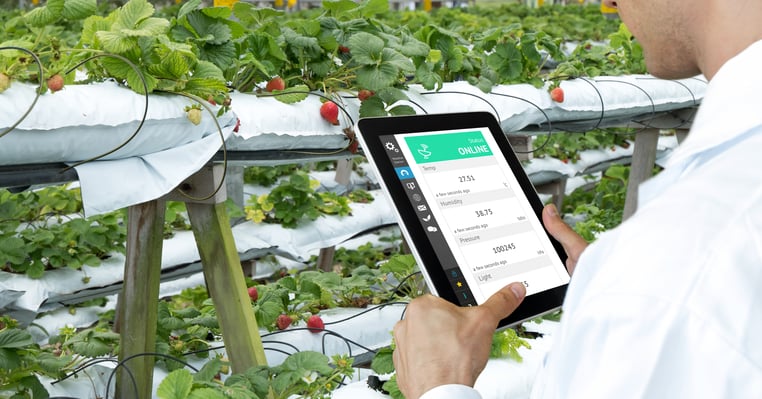Many companies today have been experiencing an increase in food recalls, with businesses trying to protect and update products containing undeclared ingredients that went unnoticed during allergen testing.
Some of the high-profile allergen related incidents has caused the reputation of businesses to drop significantly through media reporting, and with the introduction of Natasha’s Law, the challenges and risks of recall are likely to grow unless suppliers take the necessary actions now.
Here's what we'll be discussing in this blog:
- What’s the driver for effective allergen management?
- The need for risk management
- The importance of the right technology for Natasha's Law
- Why an industry-specific ERP solution is key
What’s the driver for effective allergen management?
When it comes to allergen management, food companies are accountable to four sets of stakeholders, all with shared interests:
- Consumers depend on suppliers to safeguard their health and provide them with the necessary controls and information to avoid allergic reactions
- Regulators implement varying sets of rules to enforce stringent allergen management across the industry. This is demonstrated by Natasha’s Law, which brings in stricter requirements on the transparency of food packaging and ingredients associated. Businesses should see this as a positive move, as it will help consumers feel more confident before they buy from you
- Business requirements drive the need for effective risk mitigation and consumer protection using the most dependable, efficient, and economic methods
- Companies purchasing from a producer or distributor of food items also need to have a guarantee that they have an effective allergen management system in place, or they increase their own risk and liability
Because some allergen inducing foods are commonly used in recipes for food products, it’s not always easy for consumers with allergies to stay away from them.
Consumers must rely on you to have tight control over the presence of allergens in your products and facilities. You also need to report them accurately and in a timely manner so consumers are well informed.

The need for risk management
Allergens don’t change their properties during processing or handling. So, if you manufacture, process, and distribute food items, allergen management needs to be present throughout all your business processes.
It must range from:
- Product research and recipe planning
- Purchasing
- Supplier management
- Storage and transportation
- Production and distribution
- Labelling
- Cleaning and sanitation of your equipment and facilities
If there’s a slight chance your product contains allergens, you must be able to disclose it and warn consumers.

The importance of the right technology for Natasha's Law
To manage and control allergens in your organisation, you need to be able to add allergen information to any item and track it through:
- The mixing of recipes
- The production of finished products
- Distribution and sales
ERP solutions that focus on food will have features that support allergen management and keep the process reliable, simple and centralised.
This means all the relevant information you need will be available in one location, giving you a single version of the truth.
Using the right technology for Natasha’s Law will help you produce labels automatically by using the data gathered during your recipe development and production processes. Our next section covers the benefits of what a food ERP solution can provide you.

Why an industry specific ERP solution is key
How can a food manufacturing solution help you track allergens? The right system will include the following features and functionalities:
1. Recipe management
This allows you to effectively track ingredients, which is vital for listing out contents and identifying allergens.
The right solution will help you manage:
- Single as well as multi-level recipes with the list of ingredients
- The process you follow
- The proportions
- Special instructions
All in one single place. This can also be linked to any labelling to ensure the relevant product label information can be driven directly from the recipe including batch references.
2. Supply planning
Although not directly relating to allergen management, this tool can help indirectly by providing updates on the demand and supply of finished goods. This enables proper planning for the next production batch and ensures that the food is shipped out well within accepted time limits, meeting expiry dates. This ensures any allergies impacted by ingredient aging aren’t triggered.
3. Batch production management
The batch production functionality enables calculation of demand based on orders received. You can track batches with visual sequencing, maximise the use of equipment without affecting quality and ensure you have backward and forward traceability.
4. Production recording
This allows you to keep a record of all the production data. You can also track raw materials, packaging details and all other information around the product. This not only helps you manage the allocation of materials for production but also provides a way to keep track of the production process and therefore the quality.
You can read more about the benefits of having a food-specific ERP system by downloading our guide below.
What are your next steps?
Allergens have become a key focus area especially with the introduction of new laws within the food industry. Due to the associated risks when consumers are exposed to them, having the right quality controls and management in place is critical for your business operations.
Allergen management is one of the main aspects that will also add to the quality of the end product and its ingredients, therefore, a proven food process manufacturing solution is the only way to go.
Why is it important you choose a food-specific ERP system rather than a standard one to improve your allergen management? Find out in our comparison sheet, addressing:
- The key differences between the two systems
- The limitations of generic ERP systems when it comes to quality assurance and risk management in food
- Why you need an industry-specific ERP platform to successfully transform your food business
Download it below.


